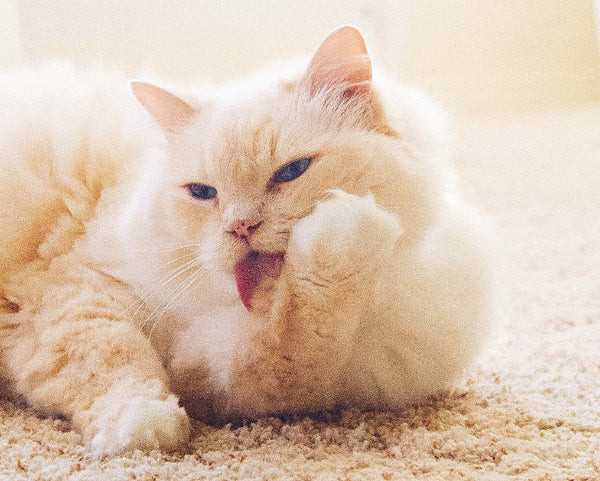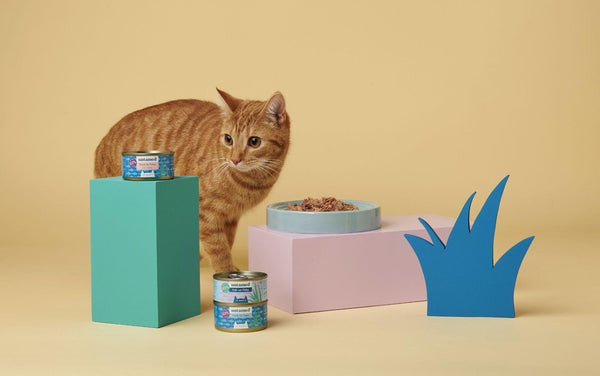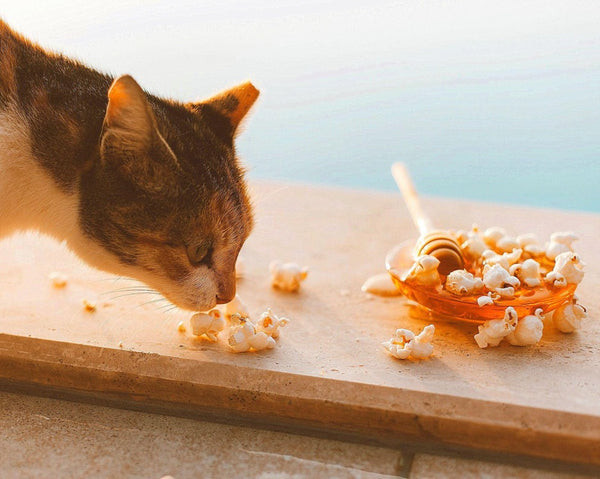Honey, a golden nectar celebrated for its natural sweetness and healing properties, has been a staple in human diets and traditional medicine for ages. But when it comes to our feline companions, Can Cats Eat Honey, or is this natural treat a potential hazard? Many cat owners are curious about sharing this sweet substance, especially given honey’s reputation as a health food for humans. However, understanding feline nutritional needs reveals a different perspective.
While some might think honey’s antioxidants could benefit cats, the reality is that honey is not a suitable food for cats. Cats are obligate carnivores, meaning their bodies are specifically designed to thrive on a meat-based diet. Unlike humans, cats lack the taste receptors to even detect sweetness, suggesting that their interest in honey, if any, is purely out of curiosity rather than a craving for sugary flavors. Giving honey to cats, especially with the intention of boosting their health or managing conditions like diabetes, is misguided and can actually be detrimental. Let’s delve into why honey and cats are not a match made in heaven.
Honey and Cats: Why They Don’t Beelong Together
Honey isn’t considered toxic to cats, but it certainly doesn’t qualify as a healthy or beneficial food for them. The nutritional makeup of honey is overwhelmingly carbohydrate-heavy, primarily composed of sugars. Approximately 80% of honey is carbohydrates (sugars), with around 18% water, and a mere 2% consisting of proteins, vitamins, and minerals. To illustrate, a typical 20-gram serving of honey breaks down nutritionally as follows:
| Nutrient Marker | Amount |
|---|---|
| Carbohydrates | Fructose: 8.5 grams, Glucose: 7.0 grams |
| Protein | 0.08 grams |
| Moisture | 3.5 grams |
| Fat | 0 grams |
| Calories | 61 calories |
When we compare this nutritional profile to the dietary requirements of a cat, it becomes clear that honey offers very little of value. An optimal feline diet should prioritize animal protein, incorporate moderate amounts of fat, and strictly limit carbohydrates. Honey, in essence, is a concentrated source of carbohydrates in the form of natural sugars, which poses digestive challenges for cats.
A key reason for this is that cats’ livers have a limited capacity to process glucose and fructose. They lack significant levels of glucokinase, the enzyme crucial for breaking down these sugars. While a tiny lick of honey might not cause immediate harm, larger quantities can overwhelm a cat’s digestive system, leading to gastrointestinal upset. Symptoms can range from gagging and regurgitation to vomiting and diarrhea.
 Curious cat looking at breakfast tray
Curious cat looking at breakfast tray
A cat expressing disinterest in a human’s breakfast, emphasizing their carnivorous needs.
Source: Daniela Constantini
Beyond digestive issues, the high calorie content of honey is another concern. Many indoor cats, especially those who are spayed or neutered, have moderate daily calorie needs. Regular honey consumption, even in small amounts, can contribute to an excess calorie intake, leading to gradual weight gain and potential obesity over time. Furthermore, the sugar content in honey can contribute to dental problems like tooth decay in cats. This principle extends to other sugary treats like chocolate, ice cream, cakes, and sweetened dairy products – they simply aren’t healthy choices for felines.
Honey’s Medicinal Uses: Do They Translate to Cats?
In human health, honey is prized for its antibacterial and anti-inflammatory properties. This has led to some considering its use in feline care, often as a home remedy for conditions like:
- Diabetes mellitus
- Anorexia (loss of appetite)
- Allergies
- Wound healing
However, it’s essential to examine these purported benefits critically in the context of feline physiology.
Honey and Feline Diabetes Management: A Dangerous Myth
Diabetes in cats arises from insufficient insulin production, disrupting their ability to convert food into energy. Cats with uncontrolled diabetes often experience increased hunger. Misguidedly, some owners might offer carb-rich foods like honey, rice, or bread to try and boost their cat’s energy levels. This approach is dangerous and counterproductive. Feline diabetes requires proper veterinary management, typically involving prescription medications and a carefully controlled diet, primarily consisting of wet food rich in meat and devoid of added sugars. Attempting to manage feline diabetes with home remedies like honey can lead to severe complications, including ketoacidosis, which can be fatal.
In fact, while honey cannot treat or prevent diabetes, excessive honey consumption can actually contribute to the development of diabetes in healthy cats due to its high sugar content and impact on blood sugar regulation over time.
Honey for Weight Gain in Underweight Cats: An Unhealthy Approach
Honey can indeed contribute to weight gain in cats, but this weight gain is likely to be unhealthy. When cats consume excess carbohydrates, their bodies convert and store them as fat. Honey and other carbohydrate-rich foods will increase a cat’s body fat percentage without promoting muscle development.
For cats needing to gain weight healthily, the focus should be on providing a biologically appropriate, high-protein diet rich in animal sources like meat, fish, and organs. These animal proteins are essential for promoting healthy weight gain through muscle mass and bone density, rather than just fat accumulation.
 Honey and flower with a cat in the background
Honey and flower with a cat in the background
Honey depicted as unsuitable for cats, contrasting its positive image for humans.
Source: Mareefe
Honey for Allergy Relief in Cats: Lack of Scientific Evidence
Honey’s anti-inflammatory properties might theoretically offer some relief from allergy symptoms in cats, such as itchy eyes and throat, paw swelling, and skin irritation. However, there is currently no scientific research to substantiate these claims in felines.
The most effective way to manage allergies in cats involves identifying and eliminating the specific allergen. Allergens can range from food ingredients to environmental factors like houseplants. Interestingly, some cats can even be allergic to pollen, which is present in honey, making honey a potentially unsuitable remedy for allergies in these cases.
Signs of an allergic reaction in cats can include:
- Wheezing
- Nasal discharge
- Skin and eye irritation
- Loss of appetite
- Excessive shedding
- Vomiting
Honey for Wound Healing in Cats: Practical Limitations
Honey contains antioxidants like flavonoids and phenolic acids, known to promote wound healing in humans, both when ingested and applied topically. Let’s consider these applications for cats:
- Honey as an Antioxidant Supplement: While honey does contain amino acids and B vitamins that act as antioxidants, it lacks crucial nutrients for feline wound healing and overall health, such as taurine and omega-3 fatty acids. Furthermore, administering honey orally to cats can be messy due to its sticky consistency, often resulting in a sticky face, particularly for breeds with flat faces like Persians and British Shorthairs.
- Honey as a Topical Wound Solution: Raw Manuka honey, in particular, is recognized for its antibacterial properties and can be beneficial as a topical treatment for minor cuts and grazes in humans. It can help create a moist wound environment and prevent bacterial infection. However, this approach is often impractical for cats. Cats are meticulous groomers and are highly likely to lick off any topical application, including honey, negating its intended benefits.
 Honey being applied to a cat's paw
Honey being applied to a cat's paw
A humorous depiction of honey being used on a cat’s paw, highlighting the cat’s likely disapproval.
Source: Joyful
For optimal wound healing and overall health, cats should obtain antioxidants and essential nutrients from a diet rich in lean meats like chicken, liver, duck, tuna, prawn, salmon, and shrimp. These ingredients are naturally rich in taurine, omega-3 fatty acids, and other immune-boosting micronutrients. High-quality wet food formulated with these ingredients is the most effective way to support feline health. Dry food often relies on meat derivatives, plant proteins, and processed fillers, offering lower nutritional value compared to real meat.
Untamed: Providing Potent Antioxidants the Right Way
When it comes to supporting your cat’s health and well-being, Untamed offers a superior approach. Our wet cat food recipes, available in both gravy and jelly formats, are crafted with high-quality whole meat, fish, and organs. These ingredients are naturally packed with essential micronutrients, including taurine and vitamin E, which are vital for feline health and antioxidant defense. Our vet-designed formulas ensure your cat receives a balanced diet with all the necessary nutrients, without unnecessary sugars or grains. Untamed recipes are grain-free and sugar-free, making them excellent for both preventing and managing common feline health issues such as diabetes, constipation, and bladder stones.
 Untamed cat food cans
Untamed cat food cans
Untamed cat food promoted as a healthy, meat-based option for cats.
Image (c) Untamed
Every Untamed dish provides:
- High animal protein content
- Vet-formulated recipes
- Ethically sourced ingredients
- Palatable and delicious flavors
Want your cat to experience the Untamed difference? Take our TRY NOW quiz to receive a customized trial pack at a special price!
Untamed: A Lifetime of Well-being for Your Feline Companion
Regardless of breed or life stage, all cats share the same fundamental nutritional needs, best met by a whole-meat diet. Feeding your cat Untamed offers numerous benefits:
 Cat licking an Untamed food bowl
Cat licking an Untamed food bowl
A cat enthusiastically eating Untamed food, highlighting its palatability.
Image (c) Untamed
Even for cats who have previously rejected wet food, transitioning to Untamed is typically smooth due to the high quality and delicious flavors. Our satisfied customers have observed a range of positive changes in their cats after switching to Untamed:
| Period on Untamed | The Wow Factor! |
|---|---|
| One Week | – Improved digestion – Less litter box odor – Better hydration |
| Two to Four Months | – Healthier coat – Reduced hairballs – Stronger muscles and bones |
| Six Months and Up | – Healthy weight management – Enhanced immunity – Stable energy levels |
Get Started with Our Trial Pack Today
Enjoy a hassle-free way to introduce your cat to Untamed. Here’s how to get your trial pack:
- Take our TRY NOW quiz.
- Select your cat’s preferred meal plan.
- Place your order.
We offer fast home delivery within one day and provide convenient services like:
 Delivery boxes of Untamed cat food
Delivery boxes of Untamed cat food
Untamed’s convenient and reliable delivery service.
Image (c) Untamed
For continuous pantry stocking, we offer regular monthly deliveries of Untamed cat food, ensuring you never run out. Our commitment to sustainability extends to our 100% recyclable packaging. Untamed is dedicated to ethical and environmental responsibility, sourcing meat from cruelty-free suppliers and seafood from sustainable, dolphin-safe sources.
Botulism: A Rare but Serious Risk Associated with Honey for Cats
Botulism, a form of food poisoning, can occur when cats ingest food contaminated with Clostridium botulinum bacteria. Initial symptoms of botulism can mimic allergies, including inflammation and respiratory difficulties. In severe cases, botulism can lead to paralysis, including paralysis of the diaphragm, which can be fatal.
Honey, along with fermented vegetables and raw meat (including BARF diets), can harbor Clostridium botulinum bacteria. Therefore, these foods should be avoided, particularly for vulnerable cats like weaning kittens and senior cats with weakened immune systems.
 Cat sniffing popcorn on the floor
Cat sniffing popcorn on the floor
A cat near spilled popcorn, illustrating the potential for foodborne bacteria in household environments.
Source: ROMAN ODINTSOV
Honey for Sick or Weak Cats? Not Recommended
Sick or lethargic cats often require high-calorie intake but may have reduced appetites for their regular food. Some owners might be tempted to offer energy-dense foods like honey, milk, eggs, or baby food. However, these options can be inappropriate and potentially worsen the cat’s condition.
For recovering cats, nutrient absorption from meat is crucial. Easily digestible, meat-based jelly food is a better option. For cats experiencing gastric upset and needing a bland diet temporarily, homemade options like plain boiled chicken or fish are more suitable.
Explore our extensive guides on what cats can and cannot eat:
